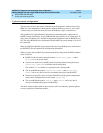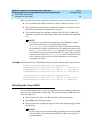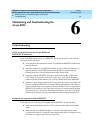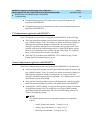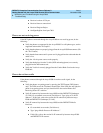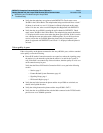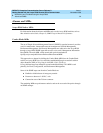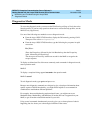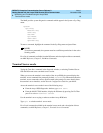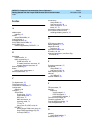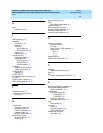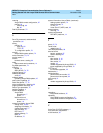
DEFINITY Enterprise Communication Server Release 9
Getting Started with the Avaya R300 Remote Office Communicator
Issue 1
November 2000
Maintaining and Troubleshooting the Avaya R300
94Alarms and MIBs
6
Alarms and MIBs
Avaya R300 Native MIBs
For information about the Alarms and MIBs native to the Avaya R300 machine, refer to
Max Administration Guide, Chapter 9, SNMP Traps to Monitor Performance.
Combo Blade MIBs
The use of Simple Network Management Protocol (SNMP) is popular because it provides
a tool for multivendor, interoperable network management. Network Management,
Performance Management, and Security Management are achieved on the Avaya R300
through a Avaya R300 SNMP agent that accesses a slot card’s Management Information
Base (MIB). The main MIB, called ascend.mib can be downloaded at
ftp://ftp.avaya.com/pub/Software-Releases/Max/Current/MIB/.
This approach was adopted in defining the Combo Blade MBI since the Combo Blade
resides in a Avaya R300 slot. It is called the combobladeGroup in ascend.mib with an
object identifier (OID) of 36, giving it a full OID 1.3.6.1.529.36, or
iso.org.dod.internet.private.enterprise.ascend.combobladeGroup. This MIB is used
primarily for Fault, Configuration, and Performance Management.
Some of the SNMP traps sent from the Combo Blade are:
■ Enabled or disabled state of emergency transfer
■ Presence or absence of -48 D.C. volts
■ Connection state of the Telcom connector
The remaining MIBs are performance statistics and can be accessed with queries through
an SNMP manager.




